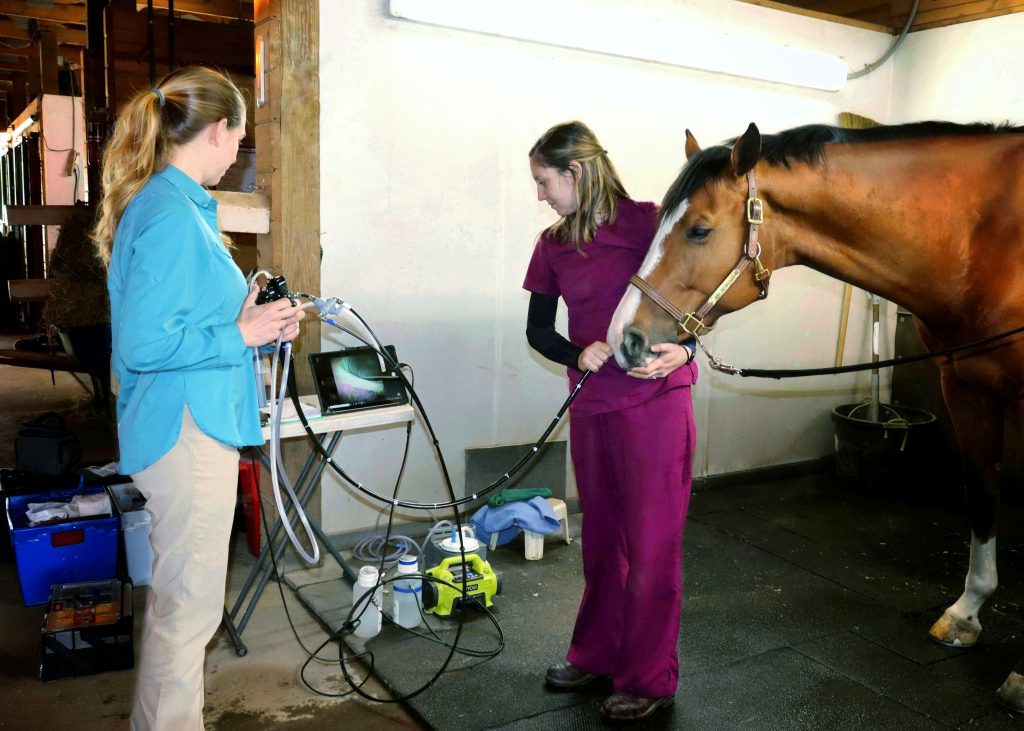EQUINE GASTRIC ULCER SYNDROME
Gastric ulcers are a common, performance and comfort limiting issue identified frequently in adult horses. Prevalence estimates are reported to range from 60-90% in adult horses, depending on age, performance and population.

GASTROSCOPY
Gastroscopy is currently the only reliable diagnostic test and is considered the gold standard for identifying and monitoring EGUS. Blauner, Buchholz and Associates offers video gastroscopy services while allowing your horse to remain in the comfort of their home barn. You see what we see as we perform the examination and results are documented with photos and video. Eliminating the trailer ride to the clinic can help decrease stress on your horse and decrease the time and expense of pursuing this important diagnostic procedure. Follow up exams are just as low stress.
What’s involved?
In preparation for gastroscopy, horses are fasted overnight. Water is withheld for only a short period of time just prior to the exam. The office will provide you with specific instructions prior to your appointment.
The patient will have a brief physical examination prior to gastroscopy and your veterinarian will discuss with you any medications the horse currently receives and will review clinical signs of concern. The horse will then be sedated so the procedure can be safely performed. The gastroscope is passed in similar fashion to the nasogastric tube for colic management, in one nostril and to the back of the throat, wait for a swallow and then travel down the esophagus to the stomach. The stomach is gently inflated with air to allow best visualization of squamous and glandular mucosa, as well as the pylorus and pyloric antrum (entrance to the small intestine). Once the exam is complete, your veterinarian can discuss treatment options for your horse based on examination findings. Once your horse is awake (usually about 45 minutes after scoping), hay and water can be returned to the stall.
For additional information, a good general article can be found here: https://aaep.org/horsehealth/equine-gastric-ulcer-syndrome